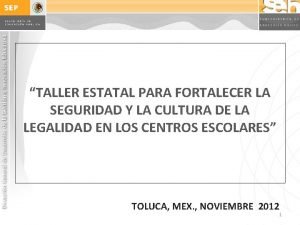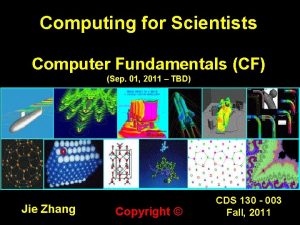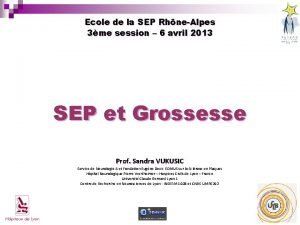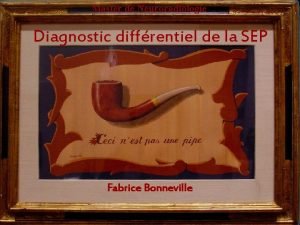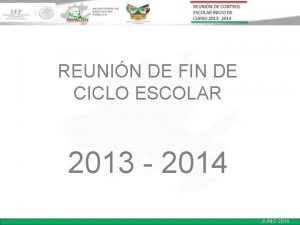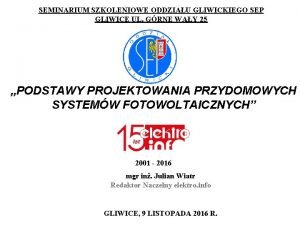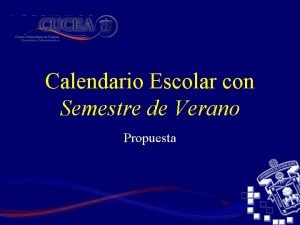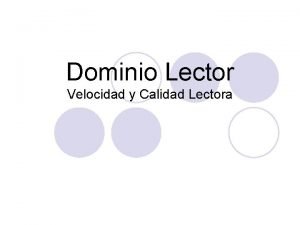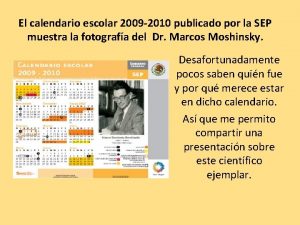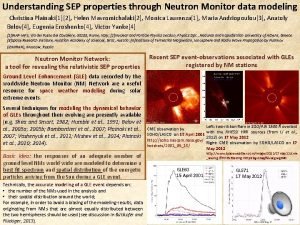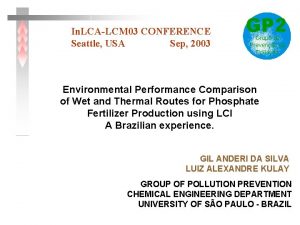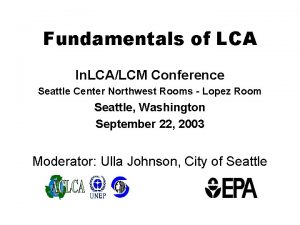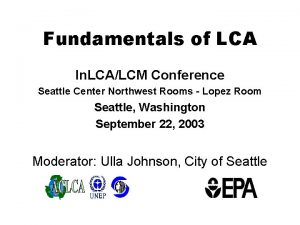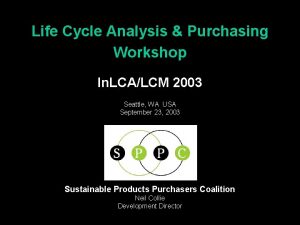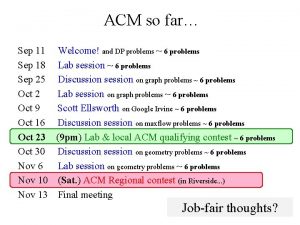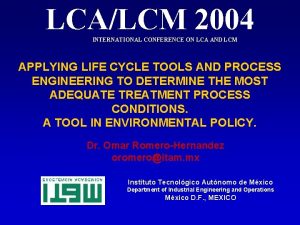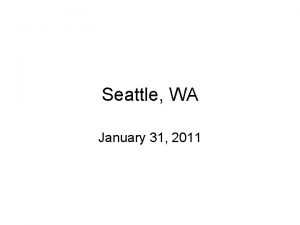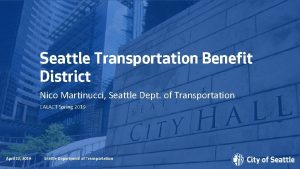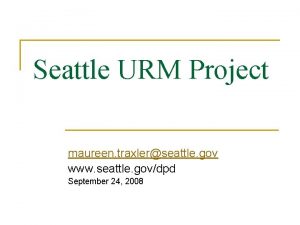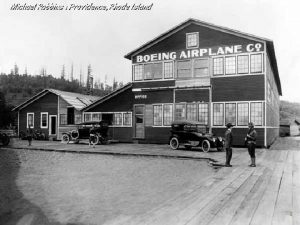In LCALCM 2003 Seattle Washington Sep 25 2003












![Direct CO 2 efficiency [yen/kg-CO 2] 0 Slaughtering and meat processing Processed meat products Direct CO 2 efficiency [yen/kg-CO 2] 0 Slaughtering and meat processing Processed meat products](https://slidetodoc.com/presentation_image_h2/843a674142edcdd834b853e4a7b81309/image-13.jpg)
![Direct CO 2 efficiency [yen/kg-CO 2] In. LCA/LCM 2003 Seattle, Washington Sep. 25, 2003 Direct CO 2 efficiency [yen/kg-CO 2] In. LCA/LCM 2003 Seattle, Washington Sep. 25, 2003](https://slidetodoc.com/presentation_image_h2/843a674142edcdd834b853e4a7b81309/image-14.jpg)







- Slides: 21

In. LCA/LCM 2003 Seattle, Washington Sep. 25, 2003 Comparison of “CO 2 Efficiency” between Company and Industry Kiyotaka TAHARA Masayuki SAGISAKA Kazuo YAMAGUCHI Atsushi INABA AIST

In. LCA/LCM 2003 Seattle, Washington Sep. 25, 2003 Introduction Eco-Efficiency Economic Ecological (Environment) An important tool to achieve sustainable development Quantity of goods or services produced or provided to customers Net sales Product or Service value Eco-Efficiency = Environmental influence Energy consumption Materials consumption Water consumption Greenhouse gas emissions (CO 2…) Ozone depletion substance emissions …… WBSCD, 1992

In. LCA/LCM 2003 Seattle, Washington Sep. 25, 2003 Source : TOYOTA Environmental Report 2002

In. LCA/LCM 2003 Seattle, Washington Sep. 25, 2003 Source : TOYOTA Environmental Report 2002

In. LCA/LCM 2003 Seattle, Washington Sep. 25, 2003 Source: Sony Environmental Report 2002

In. LCA/LCM 2003 Seattle, Washington Sep. 25, 2003 Product or Service value Eco-Efficiency = Environmental influence This study Price Gross value-added Gross income Cost Economic index CO 2 Efficiency = CO 2 emission I-O table data LCI data Environmental report of company Investor relation information

In. LCA/LCM 2003 Seattle, Washington Sep. 25, 2003 Indirect CO 2 emission Direct CO 2 emission Producer’s Price Cost Industry B Industry C Industry A Industry D Gross value-added Total CO 2 efficiency = Producer’s Price Total CO 2 emissions Direct CO 2 efficiency = Gross value-added Direct CO 2 emissions Indirect CO 2 efficiency = Cost Indirect CO 2 emissions Fig. 1 -1 Concept of CO 2 efficiency Product

In. LCA/LCM 2003 Seattle, Washington Sep. 25, 2003 Price Producer’s Price Total CO 2 emissions Total Gross value-added Direct CO 2 emissions CO 2 efficiency of Industry A Cost Indirect CO 2 emissions Average CO 2 efficiency of upstream Industry Indirect CO 2 emission Direct CO 2 emission Fig. 1 -2 Concept of CO 2 efficiency CO 2 emission

2, 000 manufacturing Water supply and waste disposal services Trade Finance and insurance Real estate Transport Communication and broadcasting Public administration Education and research Medical service, health and social security Other public service Business service Personal service Office supplies Activities not elsewhere classified 3, 000 Electric power, gas supply and steam and hot water supply Agriculture, forestry and fisheries Mining Food Textiles Pulp, paper and wooden products Chemical products Petroleum refinery and coal Ceramic, stone and clay products Iron and steel Non-ferrous metal Metal products General machinery Electrical devices Transport equipment Precision machinery Miscellaneous manufacturing products Construction CO 2 Efficiency [yen/kg-CO 2] In. LCA/LCM 2003 Seattle, Washington Sep. 25, 2003 3, 500 Total CO 2 Efficiency (Producer Price/Direct and Indirect CO 2 emission) 2, 500 service 1, 500 1, 000 500 0 Fig. 2 The Total CO 2 Efficiency (Producer Price / Direct and Indirect CO 2 emission) for each Industrial Sector

15, 000 manufacturing Water supply and waste disposal services Trade Finance and insurance Real estate Transport Communication and broadcasting Public administration Education and research Medical service, health and social security Other public service Business service Personal service Office supplies Activities not elsewhere classified 20, 000 Electric power, gas supply and steam and hot water supply Agriculture, forestry and fisheries Mining Food Textiles Pulp, paper and wooden products Chemical products Petroleum refinery and coal Ceramic, stone and clay products Iron and steel Non-ferrous metal Metal products General machinery Electrical devices Transport equipment Precision machinery Miscellaneous manufacturing products Construction CO 2 Efficiency [yen/kg-CO 2] In. LCA/LCM 2003 Seattle, Washington Sep. 25, 2003 25, 000 Direct CO 2 Efficiency (Gross value-added/Direct CO 2 emission) service 10, 000 5, 000 0 Fig. 3 The direct CO 2 Efficiency (Gross value-added / Direct CO 2 emission) for each Industrial Sector

0 Water supply and waste disposal services Trade Finance and insurance Real estate Transport Communication and broadcasting Public administration Education and research Medical service, health and social security Other public service Business service Personal service Office supplies Activities not elsewhere classified Electric power, gas supply and steam and hot water supply 600 Agriculture, forestry and fisheries Mining Food Textiles Pulp, paper and wooden products Chemical products Petroleum refinery and coal Ceramic, stone and clay products Iron and steel Non-ferrous metal Metal products General machinery Electrical devices Transport equipment Precision machinery Miscellaneous manufacturing products Construction CO 2 Efficiency [yen/kg-CO 2] In. LCA/LCM 2003 Seattle, Washington Sep. 25, 2003 700 Indirect CO 2 Efficiency (Cost/Indirect CO 2 emission) 500 400 300 200 100 Fig. 4 The indirect CO 2 Efficiency (Cost / Indirect CO 2 emission) for each Industrial Sector

In. LCA/LCM 2003 Seattle, Washington Sep. 25, 2003 Pattern A Price 100, 000 Indirect CO 2 Efficiency [yen/kg-CO 2] Total CO 2 efficiency Producer ’s Price Gross value - added Agriculture, forestry and fisheries Direct CO 2 efficiency Non-ferrous metals 10, 000 Other public service Pulp, paper and wooden products 1, 000 Transport Chemical products Petroleum Refinery and coal stone 100 Ceramic, and clay products Iron and steel 10 Cost Communication and broadcasting Indirect CO 2 efficiency Indirect Finance and insurance Producer ’s Price Total CO 2 efficiency Gross value - added Real estate Food Mining CO 2 emission Pattern B Price Trade Direct CO 2 efficiency Cost Electrical devices General machinery Metal products Construction Water supply and waste disposal services Indirect CO 2 efficiency Indirect Direct CO 2 emission Pattern C Price Total. CO 2 efficiency Producer s’ Price Gross value - added Electric power, gas supply and steam and hot water supply 1 Cost 1 10 100 1, 000 10, 000 Direct CO 2 efficiency 100, 000 Direct CO 2 Efficiency [yen/kg-CO 2] Indirect CO 2 efficiency Indirect Fig. 5 CO 2 efficiency pattern for each Industrial Sector Direct CO 2 emission
![Direct CO 2 efficiency yenkgCO 2 0 Slaughtering and meat processing Processed meat products Direct CO 2 efficiency [yen/kg-CO 2] 0 Slaughtering and meat processing Processed meat products](https://slidetodoc.com/presentation_image_h2/843a674142edcdd834b853e4a7b81309/image-13.jpg)
Direct CO 2 efficiency [yen/kg-CO 2] 0 Slaughtering and meat processing Processed meat products Bottled or canned meat products Animal oil and fats Dairy farm products Frozen fish and shellfish Salted, dried or smoked seafood Bottled or canned seafood Fish paste Fish oil and meal Other processed seafoods Grain milling Flour and other grain milled products Noodles Bread Confectionery Canned or bottled vegetables and fruits Preserved agricultural foodstuffs Sugar Starch Dextrose, syrup and isomerizes sugar Vegetable oils and meal Condiments and seasonings Prepared frozen foods Retort foods Dishes, sushi, lunch boxes School lunch (public) School lunch (private) Other foods Refined sake Beer Ethyl alcohol for liquor manufacturing Whiskey and brandy Other liquors Tea and roasted coffee Soft drinks Manufactured ice Feeds Organic fertilizers, n. e. c Tobacco Food In. LCA/LCM 2003 Seattle, Washington 9, 100 Fig. 6 The direct CO 2 Efficiency of Food Industrial Sector Sep. 25, 2003 32, 500 4, 000 3, 500 3, 000 2, 500 2, 000 1, 500 1, 000 500
![Direct CO 2 efficiency yenkgCO 2 In LCALCM 2003 Seattle Washington Sep 25 2003 Direct CO 2 efficiency [yen/kg-CO 2] In. LCA/LCM 2003 Seattle, Washington Sep. 25, 2003](https://slidetodoc.com/presentation_image_h2/843a674142edcdd834b853e4a7b81309/image-14.jpg)
Direct CO 2 efficiency [yen/kg-CO 2] In. LCA/LCM 2003 Seattle, Washington Sep. 25, 2003 400 350 300 250 200 150 100 50 0 Petroleum refinery products (inc. greases) Coal products Paving materials Petroleum refinery and coal Fig. 7 The direct CO 2 Efficiency of Petroleum refinery and coal Industrial Sector

In. LCA/LCM 2003 Seattle, Washington Sep. 25, 2003 . Cost oil Net sale Company X Net sale – Cost = Gross Income Direct CO 2 efficiency = CO 2 Factory Gross Income Most of Direct CO 2 emissions X CO 2 Office, Institute, etc. Company X Factory CO 2 4% Office, Institute, etc. Beer Company C Fig. 8 Concept of Direct CO 2 efficiency for companies

In. LCA/LCM 2003 Seattle, Washington 100% Sep. 25, 2003 Real estate Medicines. Liquor Drink Beer 80% 60% 20% 0% Beer Company A B C Percentage of production in the total net sale Direct CO 2 efficiency [yen/kg-CO 2] 40% Beer Industry sector (I-O based data) 600 500 400 300 200 100 0 Company A Company B Company C Fig. 9 Direct CO 2 Efficiency in the beer industry sector: 3 Companies’ data from environmental reports against I-O based data

In. LCA/LCM 2003 Seattle, Washington Sep. 25, 2003 construction work Petrochemistry Petroleum Other 100% 80% 60% Petroleum 20% 0% Company A B C Percentage of production in the total net sale Direct CO 2 efficiency [yen/kg-CO 2] 40% 40 Petroleum refinery products Industry (I-O based data) 30 20 10 0 Company A Company B Company C Fig. 10 Direct CO 2 Efficiency in the petroleum industry sector: 3 Companies’ data from environment reports against I-O based data

In. LCA/LCM 2003 Seattle, Washington Sep. 25, 2003 Tire Fig. 11 Direct CO 2 Efficiency in the tire industry sector: 3 Companies’ data from environment reports against I-O based data

In. LCA/LCM 2003 Seattle, Washington Sep. 25, 2003 100% Cement Other Real estate New materials Building material Lime, Aggregate Cement 80% 60% 20% 0% Company A Company B Percentage of production in the total net sale Direct CO 2 efficiency [yen/kg-CO 2] 40% 15 10 Cement Industry (I-O based data) 5 0 Company A Company B Fig. 12 Direct CO 2 Efficiency in the cement industry sector: 2 Companies’ data from environment reports against I-O based data

In. LCA/LCM 2003 Seattle, Washington Sep. 25, 2003 Gross income/ Gross value-added More efficient G Industry F Industry E Industry D Industry Less efficient Standard of Company A =A+B+C+D+E+F+G Industry C Industry B Industry A Industry CO 2 emission Fig. 13 Concept of company evaluation

In. LCA/LCM 2003 Seattle, Washington Sep. 25, 2003 Conclusion • CO 2 efficiency index was developed from I-O table data for the evaluation of industry sectors. • The CO 2 efficiency varies by industry sector. • The conparison of companys’ CO 2 efficiency against IO based industry sector CO 2 efficiency is possible. • A clear difinition of system boundary will be necessary for better resolution of company’s CO 2 efficiency. • Further examination and comparison of company’s “eco-efficiency” and its detailed investigation in relation to economic value index should be explored.
 Escuela segura sep
Escuela segura sep Sep computer
Sep computer Prgoramme
Prgoramme Sep ecole
Sep ecole Ece sep
Ece sep Ow sep
Ow sep Master sep
Master sep Conest 2020-2021 hidalgo
Conest 2020-2021 hidalgo Sep i
Sep i Sep gliwice
Sep gliwice Calendario escolar 2001-2002 sep
Calendario escolar 2001-2002 sep Irm cervicale sep
Irm cervicale sep Nueva escuela mexicana sep
Nueva escuela mexicana sep Application form
Application form Complejo sep dique la viña
Complejo sep dique la viña Tabla dominio lector
Tabla dominio lector Critere de mac donald
Critere de mac donald Cnn 10 august 31
Cnn 10 august 31 Sep certification
Sep certification Calendario escolar 2009-2010
Calendario escolar 2009-2010 Complejo pichanas
Complejo pichanas Sep properties
Sep properties
